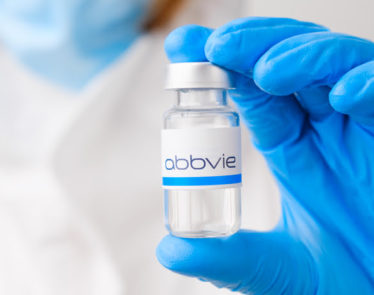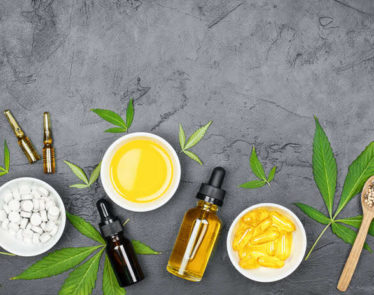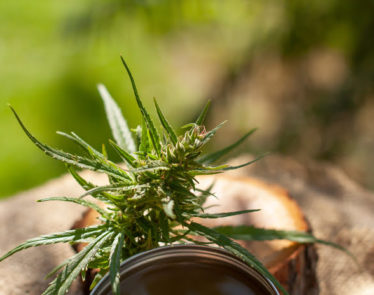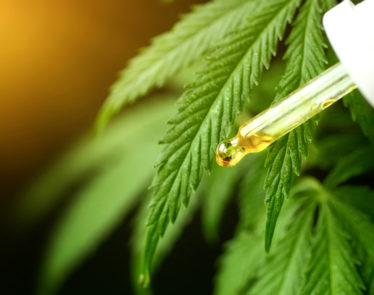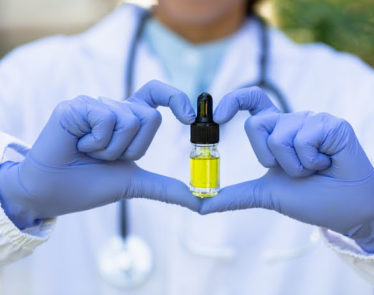
With marijuana being legalized on some level in most of the United States, it's no wonder that more and more of us want to learn how to grow marijuana for ourselves. With just a few tools, a little space, and some loyal dedication, you too can find yourself rolling up the fruits of your own labor in no time.
You may be thinking to yourself, "But, I've never grown anything, ever!" That's okay! After all, it's no coincidence that some of us refer to marijuana as weed. While there are some techniques for how to grow marijuana with improved quality and quantity in your harvest, marijuana can grow practically anywhere and without much difficulty.
So, how can you start growing marijuana? It's easy with our guide on how to grow marijuana. Let's look at the basics of what you will need in order to grow marijuana effectively and on a budget.
How to Grow Marijuana—A Guide
What's the Right Grow Space?
The first step you must take on your journey of how to grow marijuana is to decide where you are going to grow. Advancements in technology make it super simple to grow in practically any room of your home using a grow tent. Not only is a decent grow tent relatively inexpensive, it can be easily managed if you are working on this endeavor alone.
Keeping the setup simple is a key element of success for first-time growers. With all the available options today, it can be a bit overwhelming trying to decide exactly what upgrades and special niche equipment you truly need, so be sure to do your research before committing to a purchase.
What Do I Need to Prepare?
To ensure that your marijuana plant develops properly, you must understand that the two primary stages of growing marijuana—vegetation and flowering—are both heavily influenced by the light cycle that the plant experiences from the time you bury the seed until you harvest. When growing in the wild, marijuana only flowers once per year, during the autumn months when the days begin to shorten. This cycle can easily be mimicked with the right lighting setup.
When preparing to grow marijuana indoors, your grow lamps will most likely be the costliest part of your setup. There are a variety of lamps to choose from though, many of which are quite affordable. Professional growers spend thousands of dollars on specialized lighting equipment, from bulbs to timers, but when only growing a single plant or two, lighting can be acquired for much less.
If your grow space has plenty of ventilation and fresh air flow, you might want to consider High-Intensity Discharge lighting, such as a High-Pressure Sodium or a Metal Halide system. While these types of bulbs cost less initially, you will notice more than a slight increase on your next electric bill.
Another option that has been gaining popularity recently is LED, or Light-Emitting Diode, Lights. LED lighting is much more energy efficient, plus the bulbs do not emit energy in the form of excess heat, allowing you to more easily manage the temperature of your grow space.
No matter what type of bulb you choose, be sure to purchase a dependable timer. Setting the lights to turn on and off at the same times each day will help prevent unnecessary stress to your plant, and in the end, improve your harvest.

How Much Light Does a Marijuana Plant Need?
During the vegetative stage of your pot plant's growth, you will want to maintain a regular schedule with your lighting. It is recommended that new seedlings be allowed to grow for 4-6 weeks with a photoperiod, or light cycle, of 18-20 hours per day, to prevent the seedling from flowering too early. When plants flower too early, you can bet that you will not have much to harvest, if anything at all, and when growing indoors, you want to do whatever possible to maximize the harvest on each plant.
Once your plant is ready for the flowering stage, meaning that your seedling is now more robust and large enough to produce a great number of flowers for harvest, it is time to switch up the light cycle. Rotating your plants through a 12-hour cycle between light and complete darkness will allow it to enter the flowering stage.
For the best results, there are two key factors at play during the flowering stage. First, you want to make sure that during the photoperiod, when the light is on, your plant is getting the strongest available light. This will ensure that the plant can produce plenty of energy to feed its fruit production.
The other key factor to pay close attention to during this stage of growth is preventing any light whatsoever from reaching the plant during the dark cycle. When this occurs, the plant can become confused or stressed, causing seeds to develop in the flowers and reducing the quality of your bud.
What Nutrients, Containers, and Mediums Do I Need?
In addition to the right grow space and proper lighting, there are a few other variables to consider for how to grow marijuana. Since most of us are growing only one or two plants at a time, there are a variety of options when it comes to the different nutrients, containers, and mediums that can be used.
The type of medium you choose will somewhat influence the containers and nutrients that will be appropriate for your grow. The best containers, especially for soil grows, are those which have plenty of drainage and breathing holes. Marijuana does not do well in stagnant water, as the pH of the water will change over time, affecting how your plant reacts to it.
>> Medical Marijuana Dispensary vs. Recreational Marijuana Dispensary
There are also 'pots' made of fabric that are great whether you are using soil as your medium or not. These fabric containers provide certain breathability allowing fresh air to regularly pass through to the root system.
What Do I Do After the Plant Flowers?
Once your plant starts flowering, it is almost time to harvest. You will want to keep a close eye on how the trichomes are developing. Trichomes are the small 'crystals' that form on the flower, and they are also the home to THC, CBD, and other components that users benefit from. Once most of the tiny heads on the trichomes form a cloudy white color in them, it is time to harvest the flowers.
After you have trimmed your plant of all its flowers, the next step is to allow your buds to dry. Most of the time this process takes about a week or so, although heat and humidity both play a factor in the total processing time. You also want to make sure that you are not rushing the drying process, or you might end up with a very 'green, fresh cut grass' taste. Keep plenty of air flow around the buds as they dry to prevent molds and bud-rot as well.
The final stage of harvesting is the cure. Once the flowers are dry to the touch and the stems snap rather than bend under pressure, it is safe to place them into an airtight jar. A few times a day, check on the buds and open the lid to the jar as well. Doing this allows for the moisture to 'sweat' out of the buds when the jar is closed and then be replaced by dry air when you open it. A few weeks of this and then you will be ready to roll.
So, you see, how to grow marijuana is not so difficult after all.
Featured Image: Depositphotos/© VictoriaBee







